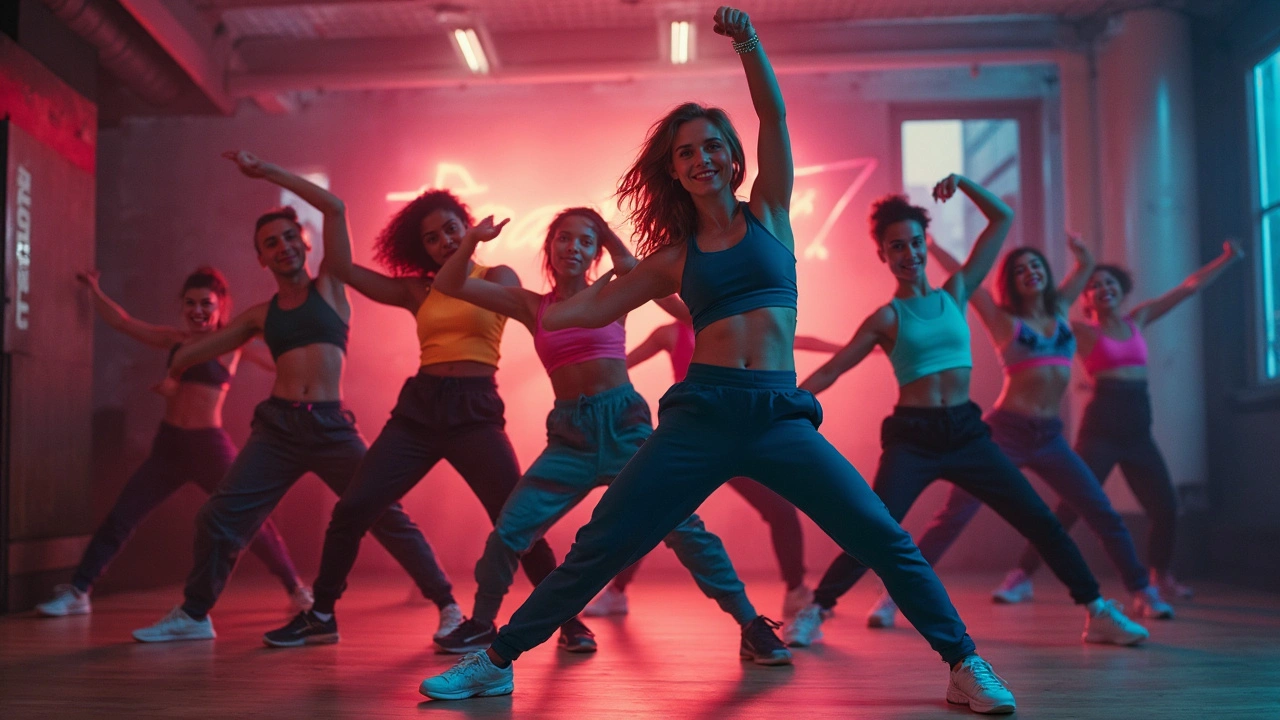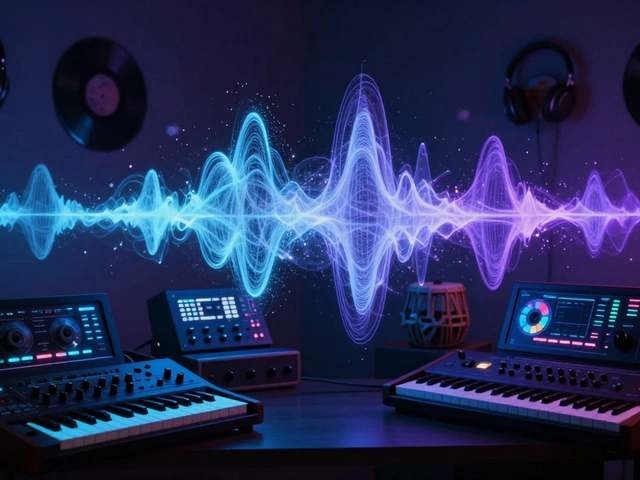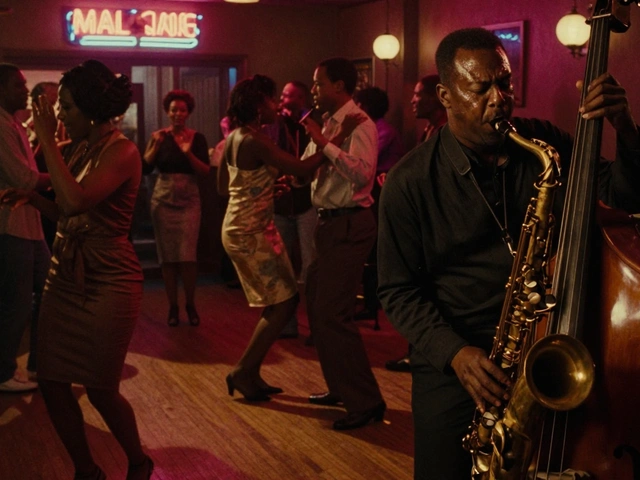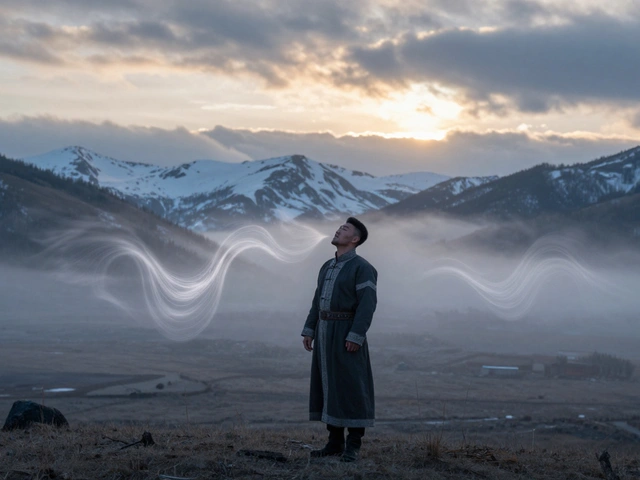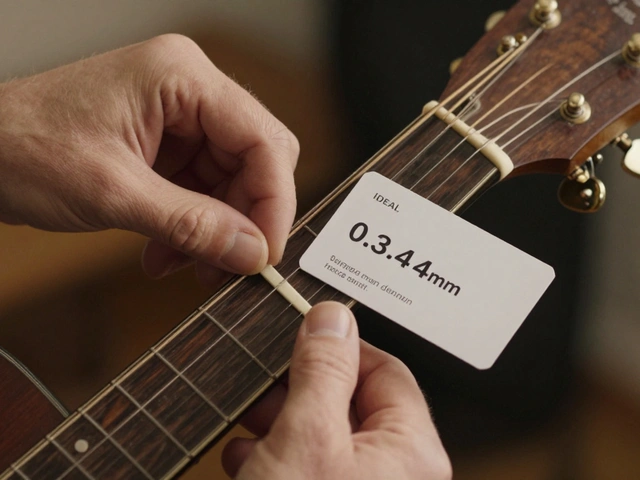If the idea of running on a treadmill leaves you cold, you're not alone. Dubstep dance is turning that feeling on its head, making workouts feel like music videos instead of chores. The mix of jolting beats, crazy sound drops, and sharp movements pulls you in before you even realize you’re burning serious calories.
You don’t have to be a pro dancer to dive in, either. Most people are surprised by how quickly they pick up the basics—think isolations, robot arms, and footwork that keeps your brain guessing. Forget standard squats and pushups for a minute. Dubstep moves demand quick thinking, balance, and coordination, so you actually work out more than just your limbs. Plus, you get to feel like you’re starring in your own club scene, even if you’re just dancing around your living room.
- What Sets Dubstep Dance Apart?
- Real Benefits for Body and Brain
- How to Get Started Without Feeling Awkward
- Essential Moves Everyone Should Try
- Taking the Next Step: Tips for Progress
What Sets Dubstep Dance Apart?
Most workouts repeat the same moves until you’re bored out of your mind. Dubstep dance flips the script with its focus on rhythm, sudden shifts, and full-body isolation. You’re not just moving to music; you’re reacting to every drop, wobble, and beat. This constant unpredictability makes your brain work overtime, too, just to keep up. Forget mindless jogging. Here, your mind is as busy as your muscles.
There’s a reason dubstep became so big online. Famous dancers like Marquese “Nonstop” Scott went viral when people noticed those unreal movements—almost mechanical, almost impossible-looking, and always right on cue with the music. The style lets you break the rules. It blends popping, robotics, waving, gliding, and bone-breaking moves you won’t see in your typical salsa or hip-hop class. Learning just a few of these will have your friends convinced you’re part of a dance crew.
No other dance style uses “musicality” to this degree. In dubstep, musicality is king: every flick of the wrist and spin of the foot matches something in the music. That connection keeps things challenging and fun. It also cranks up your calorie burn since you’re constantly moving at different speeds and using muscles you barely even notice in daily life.
Here’s what really makes it unique:
- Every session is different—the music and moves keep changing, so there’s no stale routine.
- Both big and small muscle groups get worked with a mix of sharp hits, slow glides, and quick footwork.
- You get immediate feedback; if you’re even a little off-beat, you feel it right away and adjust fast.
- It’s loud, fast, goofy, and intense. You can go full-out or keep it low impact, based on your fitness or mood.
Let’s get specific about how dubstep dance compares to more standard workouts:
| Workout Type | Average Calories Burned (1hr) | Main Skills Trained |
|---|---|---|
| Dubstep Dance | 400–700 | Coordination, Balance, Agility, Musicality |
| Zumba | 350–600 | Cardio, Coordination |
| Jogging | 350–500 | Endurance, Leg Strength |
| HIIT | 500–900 | Cardio, Strength |
If you’re bored by traditional routines, mixing in dubstep dance will keep you guessing. The variety, the energy, and the freedom to improvise set it apart. Plus, you’ll be surprised at how tough it gets after twenty minutes—you’ll feel every muscle the next day in the best way possible.
Real Benefits for Body and Brain
Dubstep dance does a lot more than just get you sweaty. Each session gets your heart rate up, acting as a cardio workout that can be just as intense as jogging or cycling. Regular dubstep dance helps people burn between 250 to 500 calories per hour—pretty impressive, especially when you’re having fun and not staring at a clock in the gym.
What makes this workout different? Those sharp movements and sudden stops activate your core, lower body, and upper body all at once. You end up working lots of muscles—from glutes and calves to abs and arms—without doing the same move over and over. It’s a smart way to build muscle endurance, balance, and flexibility while improving reaction time.
On the brain side, dubstep dance is pure gold. Fast-paced routines force you to focus, remember sequences, and react to unpredictable changes in music. Studies show that learning new dance patterns helps fire up areas of the brain that control memory and coordination. It even ramps up production of endorphins, those feel-good hormones that help fight stress and clear your mind, making you happier and a lot more energized in everyday life.
There’s another big win: it’s a social workout. Even online, sharing routines and progress gives a sense of community and motivation. That mental boost leads to sticking with your fitness goals longer. If you’re looking for a workout that gives both your body and brain a lift, dubstep dance nails it on both fronts.
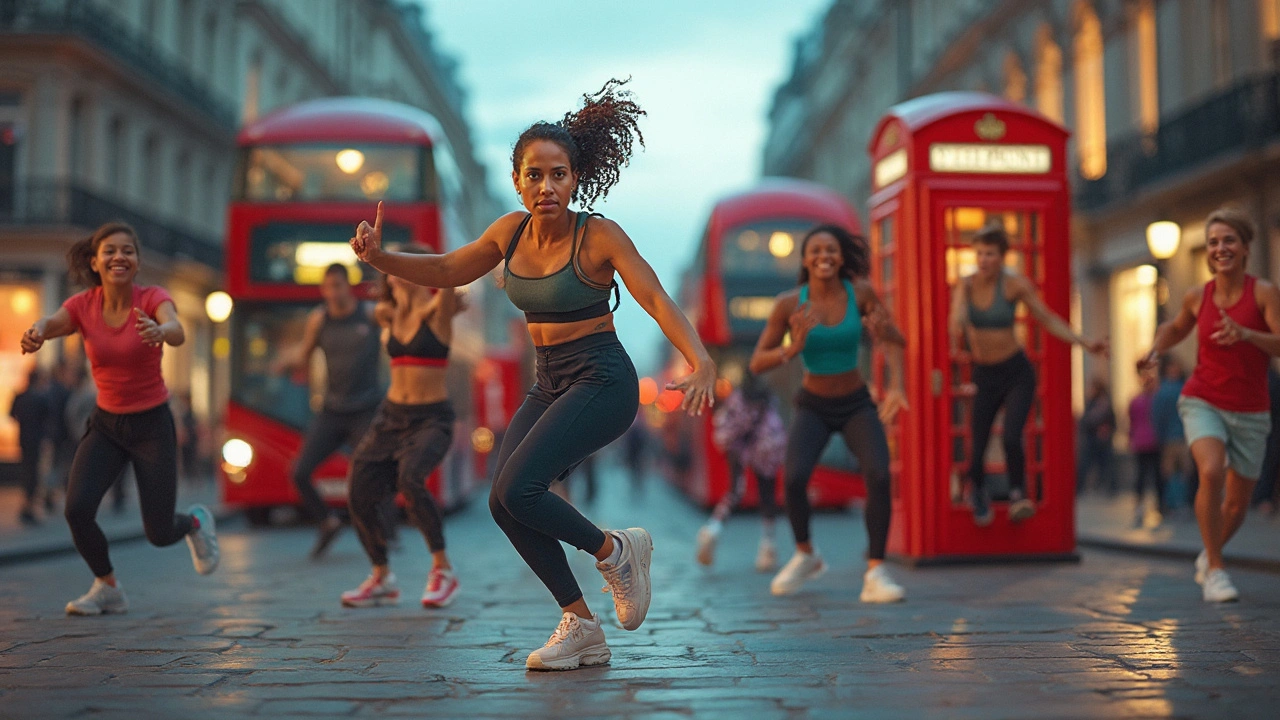
How to Get Started Without Feeling Awkward
Kicking off with dubstep dance can be nerve-wracking, especially if you’ve never set foot in a dance studio—or if your pet parrot stares at you like you’ve lost it. But awkwardness fades fast once you start moving. The secret sauce? You don’t have to nail every move. In fact, most instructors say progress is about loosening up, not perfection.
Don’t believe it’s possible? Check out what well-known choreographer Marquese “Nonstop” Scott says about starting out:
“There’s no wrong way to move as long as you’re feeling the music. Technique comes with time, but feeling it is what makes you stand out.”
Before jumping into your first class or YouTube tutorial, set realistic goals. Let yourself look silly—everyone does. And keep these starter tips in mind:
- Dubstep dance isn’t about being a robot; it’s about syncing with the beat. Listen to some dubstep tracks so your body gets used to the rhythm shifts and bass drops.
- Mirror practice works; set up your phone or find a mirror and try copying simple isolation and popping moves until they don’t feel as strange.
- Pick one or two beginner videos online—don’t try to binge-watch playlists. Focused practice always beats cramming.
- If the idea of a group class feels too intense, start solo at home with slower tracks before building up to the bangers.
Here’s a look at how new dancers rate their comfort levels over a month of starting out, according to DanceFitness Lab’s 2023 annual survey:
| Week | % Dancers Reporting Awkwardness |
|---|---|
| Week 1 | 88% |
| Week 2 | 61% |
| Week 3 | 34% |
| Week 4 | 18% |
No one expects you to glide in like a pro from day one. The key is to show up, keep moving, and realize everyone else is focused on their own progress—not your missteps. And if all else fails, remember: even the goofiest dance move burns calories.
Essential Moves Everyone Should Try
Learning core dubstep dance moves isn’t as intimidating as it sounds. Most routines use a set of signature moves that you can break down and practice at home, at your own pace. These basics not only make your dance look smoother but turn each session into a full-body workout, firing up everything from quads to your core.
- Isolations: This is the bread and butter of dubstep dance. Pick a part of your body—like your chest, head, or hips—and move it sharply while keeping the rest still. The challenge? It takes control, which means your stabilizing muscles get put to work big time.
- Waves: This move makes you look like your arm or body is rippling to the beat. Start at your fingertip, roll it through your wrist, elbow, and shoulder. Practice slowly and use a mirror to watch the wave. It’s low-impact but gives your joints and muscles a surprising stretch.
- Robot: It’s just as fun as it sounds. Lock and unlock your joints as you move, pausing on the beat. The key here is mindfulness—this move boosts balance and core stability while helping you sharpen your timing.
- Tutting: Picture your arms drawing angles and lines, like building shapes in the air to the music. Tutting is great for arm and shoulder endurance. It also boosts your spatial awareness and can be a real cardio burner with quick transitions.
- Footwork Basics: Fast steps, pivots, and slides will get your heart going. Even simple steps can be intense if you focus on speed. It’s way more engaging than running laps and does wonders for your legs and glutes.
If you’re wondering just how effective these moves are at burning calories and building muscle, check out this comparison table:
| Dubstep Move | Approx. Calories Burned/10 min | Primary Muscles Worked |
|---|---|---|
| Isolations | 50-60 | Core, stabilizers |
| Waves | 35-45 | Shoulders, arms, spine |
| Robot | 45-55 | Core, quads, arms |
| Tutting | 40-50 | Shoulders, arms, wrists |
| Footwork Basics | 60-75 | Legs, glutes, calves |
Mix and match these moves to build your own workout, or search for free dubstep dance tutorials online. Practice with slow music first, then try faster tracks as you get comfortable. You’ll look cooler, get fitter, and have way more fun than just lifting weights or running in place.
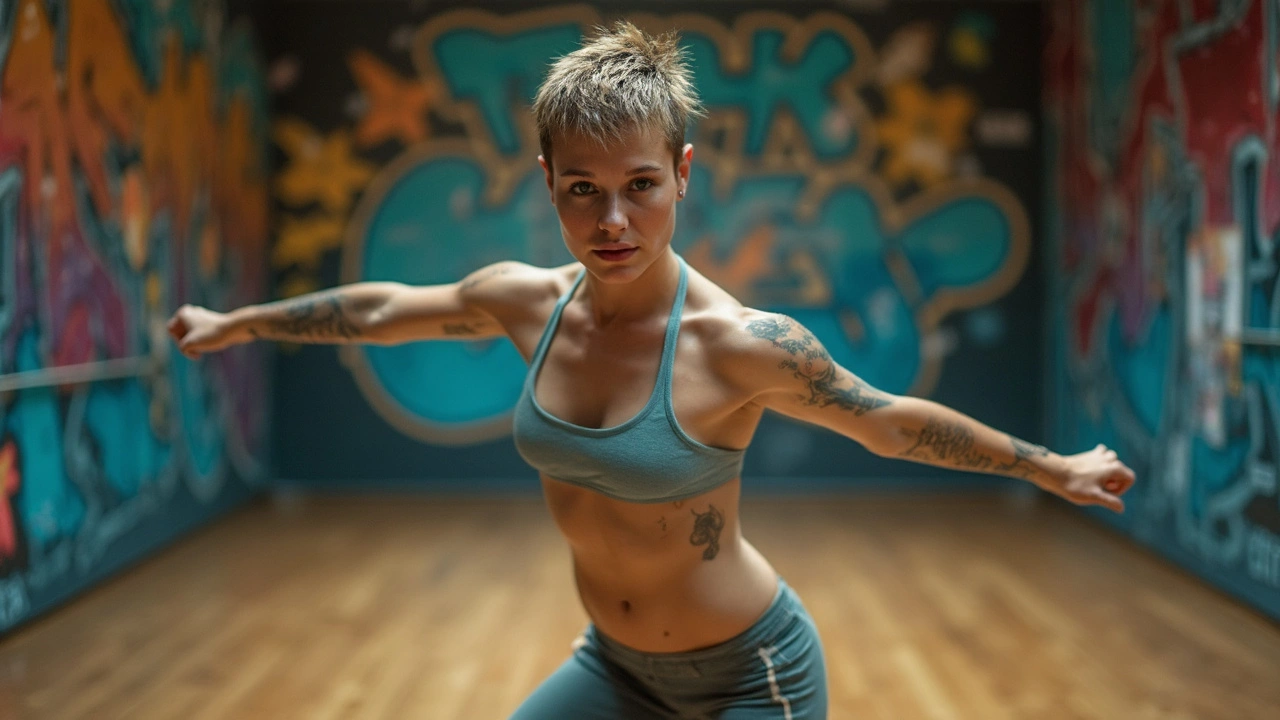
Taking the Next Step: Tips for Progress
So you’ve cleared the awkward phase, you know your robot from your wave, and dubstep tracks are always on your playlist. What’s next? Here’s where things get fun—and a bit more challenging. Progress with dubstep dance fitness isn’t about perfection, but about pushing what you can do, a little at a time.
- Record Yourself: Most top dancers say this works wonders. Watching your own moves gives you a real sense of progress and exposes habits you might miss in the mirror. Try using your phone to film routines once a week.
- Learn From Others: Streaming classes or checking YouTube for popular dubstep dancers—like Marquese Scott—lets you pick up fresh footwork and isolations that might not show up in beginner classes.
- Set Mini Challenges: Aim for a new move every week. One week it’s chest pops, the next you master a glide. Small goals keep things exciting and help keep motivation high.
- Mix Up Your Practice: Alternate high-energy songs with slower beats so you don’t burn out. It also builds better control and helps you keep up with tempo changes common in dubstep music.
- Find a Crew or Partner: Dancing with buddies gives you accountability, pushes your limits in a fun way, and, honestly, it just feels cooler sharing your progress with someone else.
| Milestone | Average Time to Achieve | Benefits |
|---|---|---|
| Basic Moves (Robot, Slides) | 2 - 3 weeks | Balance, core strength |
| Intermediate Transitions | 1 - 2 months | Coordination, speed |
| Freestyling to Dubstep Tracks | 3 - 4 months | Creativity, cardio endurance |
| Performing for Others/Recording | 5 - 6 months | Confidence, stage presence |
If you want visible improvement, try setting a regular practice schedule—a lot of dancers do 20-30 minute sessions, three to four times weekly. According to a study from the University of California, dancing to high-intensity music can burn up to 400 calories an hour. That’s on par with jogging, but way more interesting.
Don’t ignore injuries or aches. Good shoes, stretching beforehand, and staying hydrated will keep you on your feet. And if you really want feedback, join online dubstep forums. People there are usually just as excited and happy to share tips as you are to ask them.

